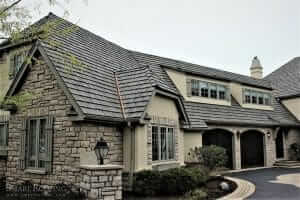When Should I Update My Attic Insulation?
It is generally recommended to replace or update your insulation approximately every 15-20 years. Depending on the extent of compression, potential damage or type of insulation that was installed, retrofitting may be required sooner than you may be anticipating.
There are certain indicators you need to look out for that point to whether you need to replace or repair your insulation, starting with increasingly expensive energy bills. If you’re noticing that indoor temperatures have been fluctuating erratically or you’re suffering from an unexplainable pest infestation – your insulation may be primed for renovation or replacement. You should also check if the insulation in your attic is damaged or even overly compressed. If that’s the case, your insulation may be losing effectiveness.
If the damage or disrepair is extensive, it may be in your best interest to call a roofing or insulation expert to diagnose and repair the issue.
Consider ‘R-value’
R-values denote a material’s ability to resist heat – as the R-value increases or decreases, so does the heat resistance. One of the tried-and-true methods of increasing a home’s R-value (along with roof replacement, when necessary) is to ensure that your attic insulation is sufficient.
Generally, many of the homes built before the 90s don’t have insulation at all, while those that do suffer from suboptimal insulation at best. How high your R-value number is will ultimately determine how much your energy bills can potentially decrease, so it’s definitely in your best interest to pump that number up.
If you’re uncomfortable performing installation or restoration yourself, or the worn insulation is in a precarious place like your ceiling, it’s best that you speak to an expert. You should also consider that different types of insulation suit different climates, and you should choose the insulation type that’s best suited to your locale.

For a complimentary inspection call us or request a free estimate.
CLICK NUMBER TO CALL
Types of Insulation
- Reflective Insulation: Also known as foil insulation, this type of insulation is great for warm climates where you may also have inadequate shading from trees. As a bonus, it performs well with asphalt shingle roofs – which tend to absorb heat more easily than their counterparts.
- Batt Insulation: Manufactured from fiberglass or mineral wool, when installed correctly Batt Insulation reduces the amount of energy you need to heat and cool your home – making it a perfect fit for colder climates.
- Loose-Fill and Blown-In Insulation: Typically installed with a blower and 100-foot hose, this type of insulation is primarily comprised of either cellulose, fiberglass or mineral wool. All the materials used in Loose-Fill and Blown-In Insulation are produced using recycled waste materials, and as a plus, this type of insulation is extremely energy efficient to boot.
- Spray Foam Insulation: Easier to install than alternatives, spray foam insulation can last an astonishing 80 to 100 years.

What Else Can I Do?
Some other things you can do to bolster your insulation is to invest in structural integrated panels – also it’s worth considering your sound-proofing needs and the environmental impact of your chosen insulation. Additional factors that come into play include how much shade your home receives from surrounding trees, homes or other buildings – deficient shading can influence how much your home heats up from the sun, so you need to identify existing or absent shade and address it accordingly.
About Rapid Restore
Our mission at Rapid Restore is to provide a stress-free, refreshingly simple, world-class roof installation experience for our customers in Long Island, NY. We look forward to protecting you. With over 110+ 5 star reviews on Google, you can trust the expert roofing contractors at Rapid Restore to replace your roof on-time and within budget.
For a quick, no-obligation estimate on your next roofing project, fill out our estimate form!




